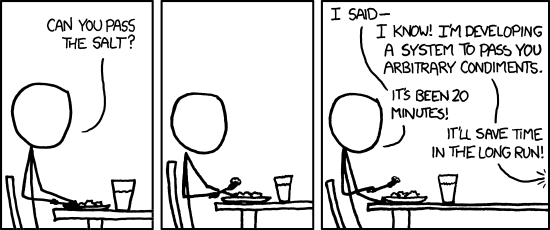OOP Conference is the longest running conferences I’ve ever presented at. This year was it’s 21st year of running, and although coming from Object-Oriented programming roots, the contents of OOPConference have evolved with the times to represent so much more – just like JAOO has over the years.
This is the second conference I’ve presented at where the talks were in a mix of languages – obviously German, since the conference is based in Munich, and the other language being English. As a result, the number of sessions I attended was much lower than I normally would and I was able to catch up with a number of other speakers such as Johanna Rothman, Michael Nygard (author of Release it!), Kevlin Henney (97 Things curator) as well as meeting many new speakers.
I was also surprised at how many German speakers I’d met previously and got to practice a little bit of German. I did try sitting in on one session with a former colleague, Gregor Hohpe where he talked about (auf Deutsch) the Near-Field Communication technology the Japanese have. He talks pretty fast in English, let alone in German. I thought I was doing pretty well understanding the gist, but at probably half an hour into the talk, I think my brain seemed to explode and couldn’t take any more. A good way to test your limits 😉 Fortunately he also used lots of photos in the slides so I could follow along.
I attended a number of other talks in English, one on the latest going on in the NoSQL space (reminding me of a news commentary on what was going on) as well as one of the keynotes by David Parnas. I’ll admit that none of the keynotes blew me away. They all had good solid points they wanted to get across but the message not really new to me. I appreciated listening to Parnas’ talk because of his significant impact to the way OO-Programming is done, although his focus on documenting and enforcing contracts meticulously (whilst having its place) isn’t necessarily as relevant in the internet applications of today (but highly relevant in embedded systems that last for 25 years!).
Something I learned from his keynote was a new tool for better thinking about object oriented design, providing a table to help people classify what sort of information they want to hide and some recommendations to do so. Although probably not a very new tool, I think it has been forgotten through the passage of time and I know plenty of developers who could learn more about real encapsulation who’d benefit from it.
I had two sessions presented at OOP Conference. The first, “Learning to see, A Systems Thinking Primer” gave people a focused introduction to systems thinking concepts, the ideas of archetypes and applying it to situations in software. I’m really glad that a German audience proved much more interactive than I’d hope and I think it proved some interesting insights into topics such as Mental Models and such.
The other sesison was working with my Hamburg-based colleague, Ken Fassone on a “Night School” lecture/workshop Pair Programming: Good, Bad and Ugly (which I have to give credit to another colleague, Rachel Laycock for). I’m not sure some some people anticipated a workshop, but I’m pleased at how some people enjoyed it. We swapped exercises after a mishap with some supplies and shipment, but afterwards, realised how difficult it was for some attendees to do some sentence writing, with a new group, in a language that is not their mother tongue. They did way better than I ever could, and from the enthusiastic thanks from some of the participants at the end of the workshop, proved to be an enjoyable exercise as well.







Recent Comments